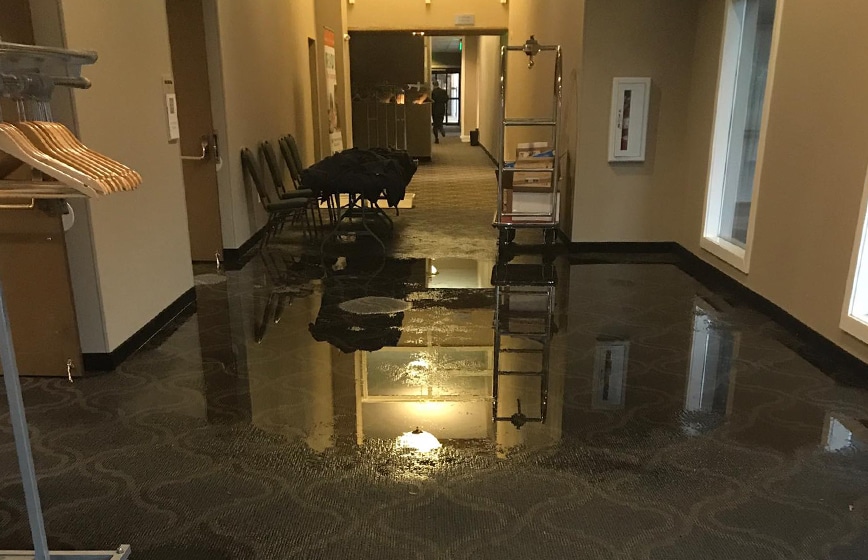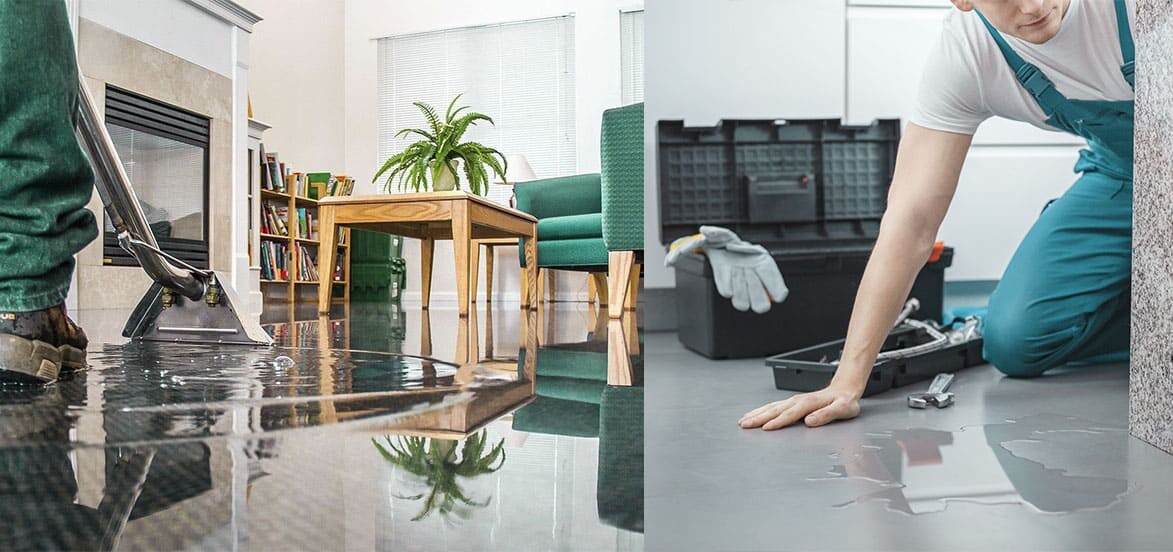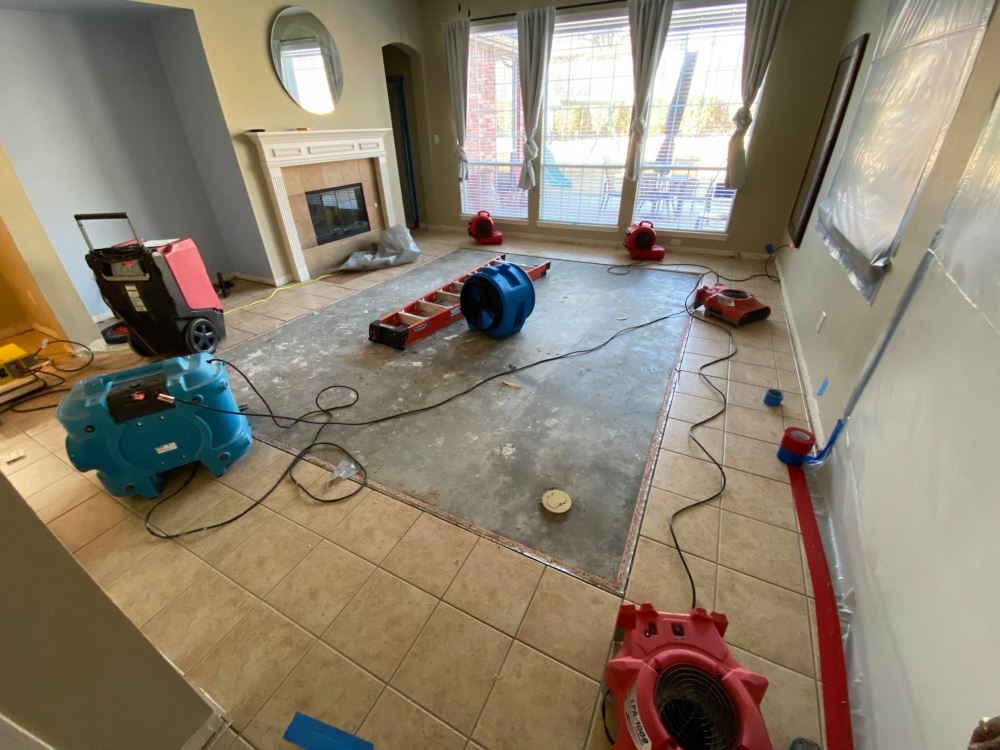Water Damage Restoration 101: Recognizing the Process and Price
Water damage can strike all of a sudden, leaving home owners in a state of complication. Comprehending the remediation procedure is vital for effective recovery. From assessing the damage to selecting the ideal solution company, each action affects the total result and price. Aspects such as the kind of water damage and urgency likewise play a significant duty. What are the particular methods used in reconstruction, and how can one get ready for possible expenditures?
Types of Water Damage

Initial Analysis and Inspection

Water Removal Techniques
Adhering to the preliminary evaluation, reliable water extraction techniques are used to reduce damage and prevent additional issues. These techniques involve making use of customized devices such as industrial-grade vacuums and completely submersible pumps - Water Damage Restoration. The option of method depends on the volume of water existing and the sort of materials influenced. For standing water, submersible pumps are usually made use of for quick elimination, while vacuum cleaners are ideal for removing water from rugs and upholstery. Furthermore, advanced methods like water removal mats might be utilized for hard-to-reach areas - Water Damage Restoration. The objective is to remove as much water as feasible, reducing the potential for mold growth and architectural damage. Prompt and reliable water extraction is essential in the general water damage reconstruction procedure
Drying Out and Dehumidification Process
Once the water removal is full, the drying and dehumidification procedure ends up being essential to recovering the affected location. This stage generally employs industrial-grade dehumidifiers and air movers to efficiently decrease wetness degrees. The dehumidifiers reel in wet air, eliminating excess moisture, while air movers distribute air to increase evaporation. Surveillance equipment is commonly utilized to track humidity and temperature degrees, ensuring suitable drying out conditions. The period of this process can vary depending on the level of the water damage and environmental variables. It is vital to extensively dry all impacted products, including wall surfaces, floor covering, and home furnishings, to avoid mold growth and structural damage. Appropriate implementation of this step is important for an effective repair end result.
Cleaning and Sanitizing Affected Areas
A detailed first assessment and inspection of impacted areas is crucial to determine contamination degrees when the drying process is total. Water Damage Restoration. Reliable cleansing strategies and appropriate products need to then be employed to remove particles and spots. Lastly, sanitization and disinfection methods are important to guarantee that harmful pathogens are removed, recovering the area to a risk-free condition
Initial Analysis and Inspection
Before beginning any kind of remediation initiatives, a thorough first assessment and examination of the impacted areas are essential for efficient cleansing and sterilizing. This process entails determining the extent of water damage, establishing the source of the water breach, and evaluating the products affected. Inspectors usually try to find indications of mold development, architectural honesty concerns, and harmed possessions. The evaluation likewise includes checking wetness degrees using customized equipment to ensure no surprise water pockets remain, as these can cause further complications. Recording the findings is necessary for preparing the next action in the remediation procedure. A detailed initial assessment enables restoration specialists to devise a targeted strategy for reliable cleaning and sanitizing, inevitably reducing damage and wellness dangers.
Cleaning Up Methods and Products
Effective cleansing and sterilizing of water-damaged locations require a selection of items and strategies tailored to the specific products impacted. For permeable surfaces like drywall and carpeting, extraction methods are important to eliminate excess dampness, complied with by deep cleansing with specialized detergents. Non-porous materials such as ceramic tile or steel can be cleansed using commercial-grade cleaners that properly eliminate impurities. Steam cleaning is one more efficient method, particularly for carpets and upholstery, as it uses high temperatures to eliminate bacteria and mold and mildew (Water Damage Restoration). In addition, eco-friendly items are increasingly preferred for their safety and security and effectiveness - Emergency Water Removal. Inevitably, picking the proper cleansing approaches and items not just ensures instant tidiness however likewise aids in avoiding additional damage and health risks associated with water breach
Sanitization and Disinfection Approaches
When resolving water damage, appropriate sanitization and disinfection techniques are important to ensure the safety and wellness of the affected setting. After preliminary cleansing, surfaces need to be treated with suitable anti-bacterials to remove pathogens, mold, and germs that prosper in moist problems. Common techniques consist of the use of EPA-approved chemical anti-bacterials, which can be applied through splashing or wiping methods. In addition, ultraviolet (UV) light systems can properly sanitize locations by neutralizing microbes without severe chemicals. The selection of method commonly depends on the kind of products influenced and the extent of contamination. Eventually, complete sanitization not just restores a risk-free home yet likewise aids stop future wellness risks connected with sticking around wetness and mold development.

Repair Services and Restoration Options
Examining the damage brought on by water direct exposure is vital for establishing the suitable fixings and repair alternatives. Homeowners may encounter various concerns, including harmed drywall, deformed floor covering, and jeopardized structural components. Depending on the level of the damage, repairs might include replacing areas of drywall, mounting new flooring, or strengthening structural beams. In cases of severe damage, full substitute of afflicted materials may be required. Additionally, specialist conservators often advise using dampness meters to assess concealed dampness degrees prior to choosing the finest strategy. It is essential to act without delay to prevent mold growth and more damage. Selecting the appropriate choices not just restores the home but also ensures lasting safety and security and capability.
Factors Affecting Restoration Expenses

The level of water damage straight impacts the restoration sets you back homeowners can anticipate to sustain. Aspects such as the resource of the water, the period of exposure, and the afflicted products considerably affect prices. Tidy water site here damage from a busted pipeline is normally much less costly to bring back contrasted to damage triggered by sewage. Furthermore, the level of contamination determines the demand for specialized cleaning and disposal services, better enhancing costs. Geographic location likewise plays a duty, as local labor prices and accessibility of restoration services can differ. The urgency of the reaction influences expenses; quicker interventions typically lead to lower general expenditures by preventing further damage. Understanding these aspects is crucial for property owners when estimating restoration prices.
The three key types of water damage are classified based on contamination degrees: clean water, grey water, and black water. An extensive first assessment and assessment are essential actions in the water damage repair process. For standing water, completely submersible pumps are usually made use of for rapid elimination, while vacuums are ideal for removing water from rugs and furniture. The level of water damage directly influences the restoration costs home owners can expect to sustain. Tidy water damage from a damaged pipeline is usually less costly to recover compared to damage caused by sewer.